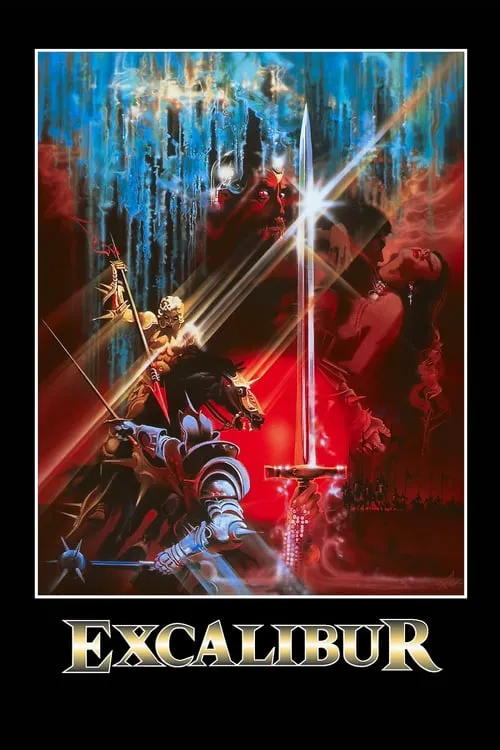Excalibur

Plot
Directed by John Boorman, 'Excalibur' is a 1981 epic fantasy film that reimagines the classic tale of King Arthur and his Knights of the Round Table. Loosely based on Sir Thomas Malory's 'Le Morte d'Arthur,' the film boasts a captivating narrative that explores the essence of chivalry, loyalty, honor, and the inevitability of fate. The film begins with a haunting prologue, depicting the sorceress Morgana, sister of the powerful wizard Merlin, bearing Excalibur, the legendary sword of King Arthur, into the forest to birthplace her son Pendragon. The narrative then jumps forward in time to the conception of Arthur, born out of wedlock but ultimately acknowledged by Uther Pendragon, the King of Britain, who had disguised himself as Arthur's mother, Igraine, to sleep with her. The circumstances surrounding Arthur's birth lead to a power struggle between his half-sister Morgana and his mother Igraine, establishing the central theme of good versus evil that permeates the film. Upon the death of Uther Pendragon, Arthur becomes king, but his legitimacy is questioned due to his birth. Merlin, who recognizes Arthur's fate, manipulates the young king into pulling the sword Excalibur from a stone, solidifying his position as the rightful ruler of Britain. The Round Table, a symbol of unity among Arthur's knights, is formed, with Sir Lancelot, the noble but troubled knight, taking center stage. As the narrative unfolds, we are introduced to the beautiful Guinevere, Arthur's wife, and her affair with Lancelot, the two of which would ultimately contribute to the downfall of the kingdom. The Knights of the Round Table embark on a perilous journey in search of the Holy Grail, a mystical and powerful relic said to hold the essence of Christ's blood. Their quest becomes an allegory for the spiritual journey of the characters, as they grapple with the duality of good and evil within themselves. Throughout the film, John Boorman employs striking visuals, incorporating vivid colors and stunning landscapes to transport the audience to a world of magic and wonder. The cinematography is breathtaking, capturing the grandeur of Camelot and the majesty of its knights. The use of symbolism adds depth to the narrative, as the Round Table represents unity, Excalibur symbolizes Arthur's power, and the Holy Grail represents spiritual enlightenment. The film's climax centers on the pivotal battle between King Arthur and his illegitimate half-brother, Mordred, the spawn of Morgana and Uther Pendragon. Mordred, consumed by hatred and a desire for power, ultimately leads to the downfall of Camelot. The final confrontation between Arthur and Mordred serves as a poignant representation of the cyclical nature of fate and the inevitability of one's destiny. The film concludes with Sir Bedevere, one of Arthur's loyal knights, throwing Excalibur into a lake, as per Arthur's wish, symbolizing the passing of power and the end of an era. Arthur, mortally wounded by Mordred's treachery, is taken to the shore of the lake, where he finally meets Guinevere, his long-lost love. In a poignant moment, Arthur and Guinevere, finally able to be together, are reunited in death. The film ends with Guinevere, surrounded by the knights of the Round Table, as they mourn the loss of their beloved king, and the demise of Camelot. John Boorman's adaptation of 'Le Morte d'Arthur' is a masterpiece of storytelling, weaving a compelling narrative of love, loyalty, honor, and the eternal struggle between good and evil. 'Excalibur' is a sweeping epic that transports the audience to a world of myth and magic, where the lines between reality and legend blur.
Reviews
Recommendations




